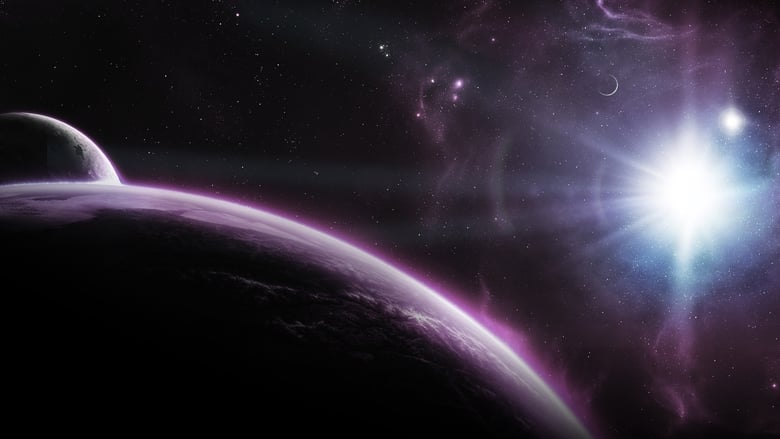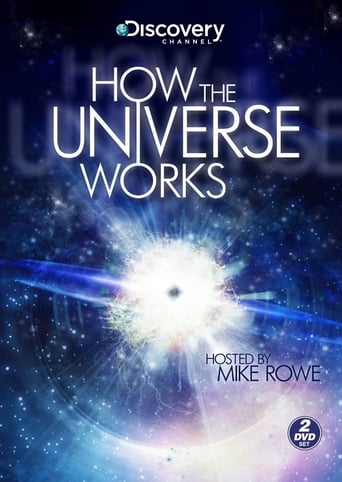

Release Date
PremieredHow the Universe Works Season 1 released on April 25, 2010.
Your Progress
Track your watching progress by signing in
Sign In to Track ProgressSeasons
Big Bang
This is the greatest story ever told, the creation of everything us. The programme investigates how the Universe came into existence out of nothing, and how it grew from a miniscule point, smaller than an atomic particle, to the vast cosmos we see today.
Black Holes
Black Holes,the most powerful destroyers in the Universe, the most mysterious phenomena in the heavens. For years they were only speculation, now modern astronomy is proving them frighteningly real and showing that they may well shape everything we see.
Galaxies
Galaxies, home to stars, planets and us, come in all shapes and sizes. Witnesses the evolution of galaxies; from clouds of cold gas floating in the voids of space 13 billion years ago, to the magnificent spirals that fill our night sky.
Stars
The story of how stars were made by the Universe and how Stars then went on to engineer everything else in that very universe. They changed the Universe by spawning further generations of stars, then planets and eventually the building blocks of life.
Supernovas
Stars are not eternal; they are dying in unimaginably large explosions called supernovas. Second only to the Big Bang, these explosions are where creation and destruction meet. Only now have we begun to understand how these wonders in our sky work.
Planets
There are just eight planets in our solar system, but there could be a hundred billion planets in our Milky Way galaxy alone. This show follows the journey of planets as they grow from grains of dust to the magnificently diverse worlds we see today.
Solar Systems
Is our solar system unique? Since the first discovery of a planet orbiting another star, some 280 alien solar systems have been identified. It's only by looking at solar systems far beyond our own, that we can understand how remarkable our universe is.
Moons
Moons come in every possible shape and size. Home to incredible natural phenomena like gigantic geysers and colossal volcanoes, moons also offer perhaps the best chance of finding alien life in the Universe - and they probably exist in the billions.

Latest Trailers and Teasers
Death of The Universe | How the Universe Works
How the Universe Works
Season 1
Release Date
PremieredHow the Universe Works Season 1 released on April 25, 2010.
Your Progress
Track your watching progress by signing in
Sign In to Track ProgressBig Bang
This is the greatest story ever told, the creation of everything us. The programme investigates how the Universe came into existence out of nothing, and how it grew from a miniscule point, smaller than an atomic particle, to the vast cosmos we see today.
Black Holes
Black Holes,the most powerful destroyers in the Universe, the most mysterious phenomena in the heavens. For years they were only speculation, now modern astronomy is proving them frighteningly real and showing that they may well shape everything we see.
Galaxies
Galaxies, home to stars, planets and us, come in all shapes and sizes. Witnesses the evolution of galaxies; from clouds of cold gas floating in the voids of space 13 billion years ago, to the magnificent spirals that fill our night sky.
Stars
The story of how stars were made by the Universe and how Stars then went on to engineer everything else in that very universe. They changed the Universe by spawning further generations of stars, then planets and eventually the building blocks of life.
Supernovas
Stars are not eternal; they are dying in unimaginably large explosions called supernovas. Second only to the Big Bang, these explosions are where creation and destruction meet. Only now have we begun to understand how these wonders in our sky work.
Planets
There are just eight planets in our solar system, but there could be a hundred billion planets in our Milky Way galaxy alone. This show follows the journey of planets as they grow from grains of dust to the magnificently diverse worlds we see today.
Solar Systems
Is our solar system unique? Since the first discovery of a planet orbiting another star, some 280 alien solar systems have been identified. It's only by looking at solar systems far beyond our own, that we can understand how remarkable our universe is.
Moons
Moons come in every possible shape and size. Home to incredible natural phenomena like gigantic geysers and colossal volcanoes, moons also offer perhaps the best chance of finding alien life in the Universe - and they probably exist in the billions.